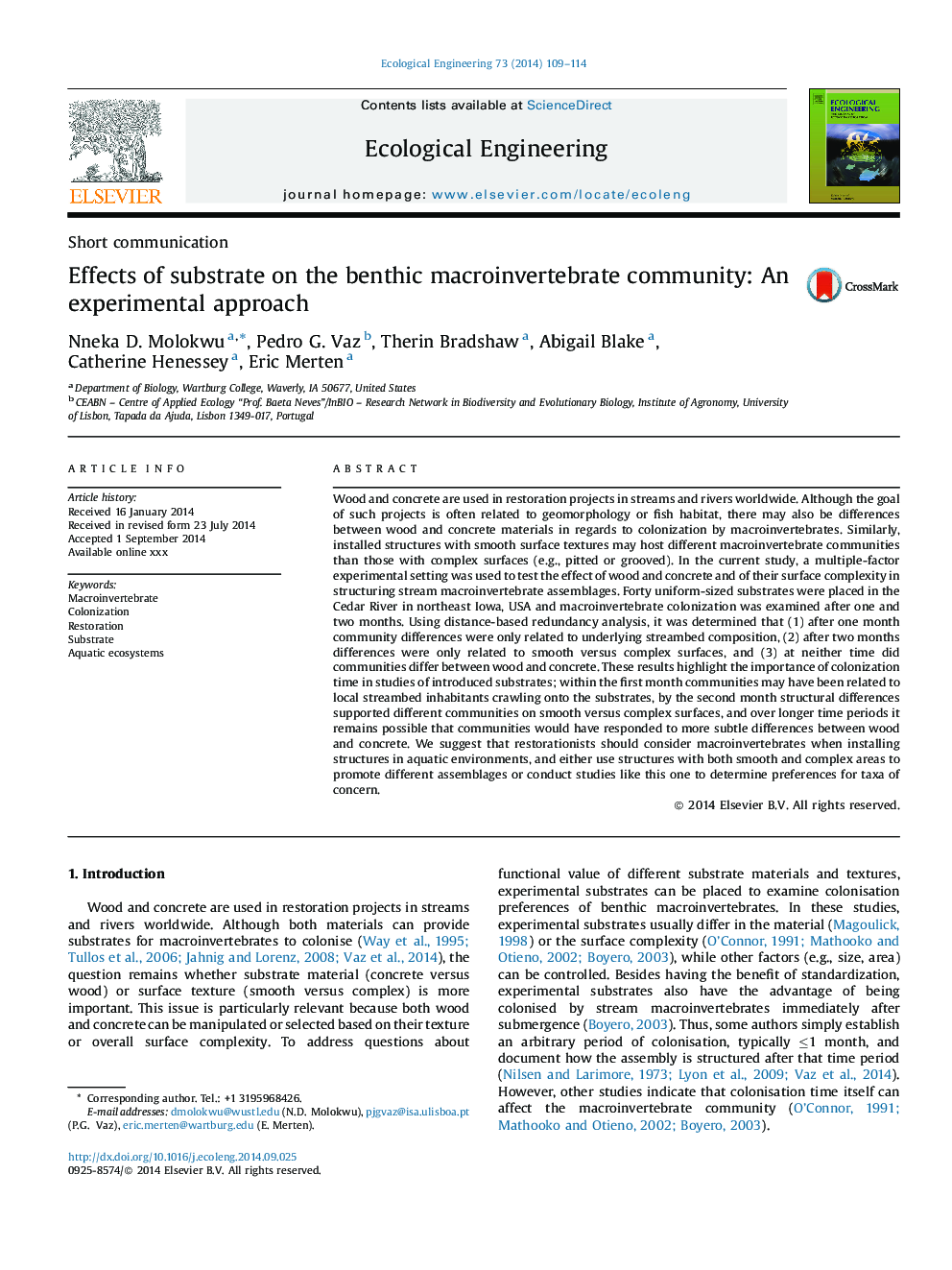| Article ID | Journal | Published Year | Pages | File Type |
|---|---|---|---|---|
| 6301859 | Ecological Engineering | 2014 | 6 Pages |
Abstract
Wood and concrete are used in restoration projects in streams and rivers worldwide. Although the goal of such projects is often related to geomorphology or fish habitat, there may also be differences between wood and concrete materials in regards to colonization by macroinvertebrates. Similarly, installed structures with smooth surface textures may host different macroinvertebrate communities than those with complex surfaces (e.g., pitted or grooved). In the current study, a multiple-factor experimental setting was used to test the effect of wood and concrete and of their surface complexity in structuring stream macroinvertebrate assemblages. Forty uniform-sized substrates were placed in the Cedar River in northeast Iowa, USA and macroinvertebrate colonization was examined after one and two months. Using distance-based redundancy analysis, it was determined that (1) after one month community differences were only related to underlying streambed composition, (2) after two months differences were only related to smooth versus complex surfaces, and (3) at neither time did communities differ between wood and concrete. These results highlight the importance of colonization time in studies of introduced substrates; within the first month communities may have been related to local streambed inhabitants crawling onto the substrates, by the second month structural differences supported different communities on smooth versus complex surfaces, and over longer time periods it remains possible that communities would have responded to more subtle differences between wood and concrete. We suggest that restorationists should consider macroinvertebrates when installing structures in aquatic environments, and either use structures with both smooth and complex areas to promote different assemblages or conduct studies like this one to determine preferences for taxa of concern.
Related Topics
Life Sciences
Agricultural and Biological Sciences
Ecology, Evolution, Behavior and Systematics
Authors
Nneka D. Molokwu, Pedro G. Vaz, Therin Bradshaw, Abigail Blake, Catherine Henessey, Eric Merten,
